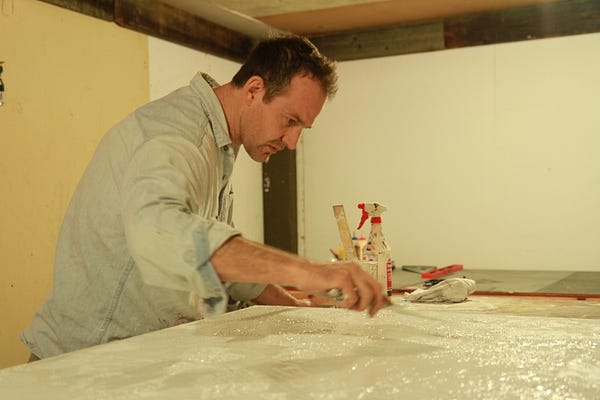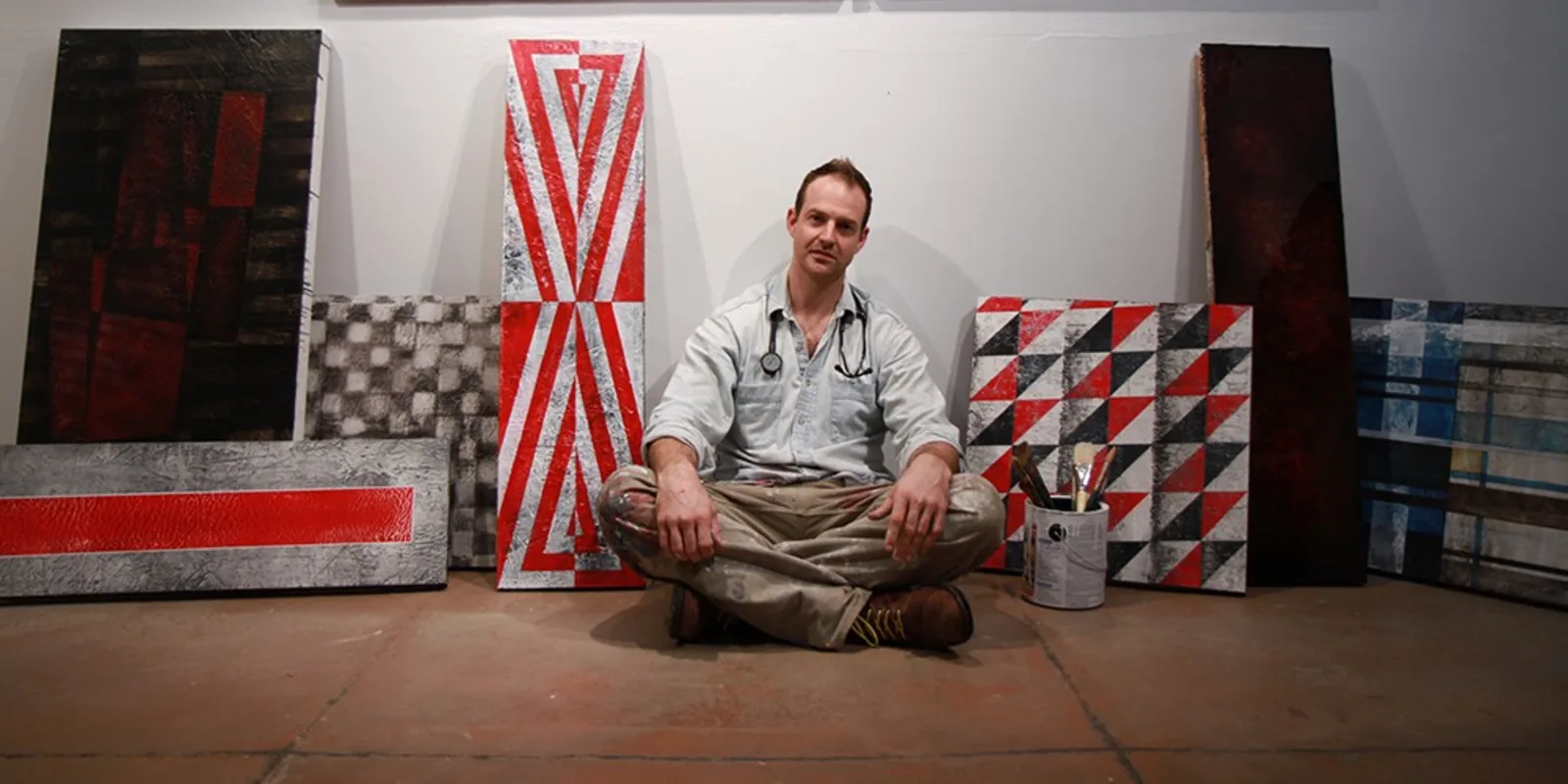
Dr. Matthew Wetschler is an emergency medicine physician-artist based in northern California. Alongside practicing medicine, Wetschler uses acrylic paint and plaster to create medically-inspired artistic pieces.
A self-labeled wanderer, Dr. Matthew Wetschler took the long road to medicine. As a philosophy and fine arts major in college, Wetschler initially had no intentions of becoming a physician. He spent most of his time post-undergrad skiing, painting, and traveling. After years of racing down the slopes of Wyoming and crafting artwork with the neighborhood youth, he found himself in India. There, he bore witness to several medical traumas that caused him to reevaluate his career aspirations.
“I wanted to feel comfortable in a situation where there is a person hurt and no one in the area knows what to do,” Wetschler explained. “I was also attracted to the role of the healer — it existed in all cultures as a very central, social role in the community; I thought it would be a very interesting lens to view the human experience with.”
After deciding to pursue medicine, Wetschler attended medical school and entered a residency program in emergency medicine. But, that’s when things took another turn. Halfway through his residency, Wetschler began to feel overwhelmed. His creativity became caged and his independence robbed. Unable to express himself outside of the technicalities of medicine, he was eventually pushed into a significant depression. In short, he became burned out. By his third year of residency, his condition had reached its peak, at which point he decided to take a break and revisit his artistic side.

By returning to art, Wetschler slowly regained the self-confidence and personal wellness that he had lost in residency. Spending up to 50 hours per week in the studio, he translated the rigor of his medical training into abstract pieces inspired by his clinical encounters. Painting provided Wetschler with a personal sense of satisfaction that came from a “deep and authentic effort.” After a four-month hiatus from the hospital, he returned, energized and motivated to complete his residency.
Upon his return, Wetschler gave his senior talk on his personal experiences in depression, art, and wellness, emphasizing the prevalence of physician burnout and the healing powers of creativity. He now presents this lecture to physicians and students across the country.
To this day, Wetschler maintains a fine balance between medicine and art, switching between the two every few weeks.
His latest series, titled It’s Hard Loving You Closely, highlights the discord between abstract ideals and imperfect realities as a medical provider.

AS: Does your artistic side directly affect your life as a physician? How so?
MW: It does, but in an oblique way. Clinical practice isn’t a time for creativity — it is a technical discipline. So, it doesn’t change my decision when it comes to medications to give, or treatments to recommend. But, making art has me engage with different ways of seeing the world and exploring different narratives. Whenever I go back into the clinical environment, I find that I’m very intentional and effortful in preserving space to connect emotionally with my patients. My creative practice gives me an impetus to do that more regularly, even when the environment is very demanding and chaotic.
I think that’s important because there are a lot of systemic forces right now that are changing clinical medicine into something that is very fast-paced, and at times, very productivity-driven. If we go too far in that direction, we’ll just be practicing a form of medicine that has all emotional content removed, where patients aren’t seen as people, but more as objects.
AS: How has your life in medicine influenced your artistic endeavors?
MW: My artwork now has changed in that I’ve made an effort to express something about the medical experience. Before medicine, I didn’t have that experiential grounding, so my art related to different things in my life. My art in undergrad was more based on things that I had been reading or just more broader thoughts on how we experience the world. But, my experience in medicine has given it this very practical and visceral grounding, and I try to stay connected to that whenever I’m painting.
AS: What advice do you have for aspiring or young physicians who are also interested in the arts?
MW: For people who see themselves as creative individuals, it’s important to go into [medicine] with both a recognition and conviction that that is something that’s important to you. And, to make choices to try and prioritize space for that in the future, [while] simultaneously recognizing that your ability to do so will be very limited during parts of your medical training. But, even if your [creative practice] is dormant, it’s still there, and there will be a time where you can make space for it. It just requires staying connected with the conviction that being creative is important to you.
There also needs to be a recognition that art and creativity isn’t going to speak to everybody. Getting all doctors to paint isn’t gonna be a silver bullet for wellness. But, I do think that having some space for creative expression and interpretation of creative work will give us a higher sense of open-endedness and ambiguity, which is [needed].
AS: Do you think we need to better promote creativity in medical education?
MW: I think great art often has this spaciousness to it. It’s not prescriptive, it’s not an equation. And, most of medicine also has that ambiguity built into it. In the earlier parts of medicine, you learn from a textbook, and you’re tested on it; everything’s a multiple choice question. It gives this illusion that medicine fits into boxes; but as you learn more and experience more, and eventually transition into practicing clinically, you realize the boxes that we create are generally arbitrary. Most people don’t fit neatly into categories, and there is no right or wrong answer. All of medicine is a state of varying levels of ambiguity and spaciousness.
I think some element of our education that recognizes the importance of process rather than merely conclusion would be beneficial, and I think we would do medical trainees good in providing them tools to be more comfortable with that. Making efforts in being creative is one way you can engage with that openness or spaciousness.






